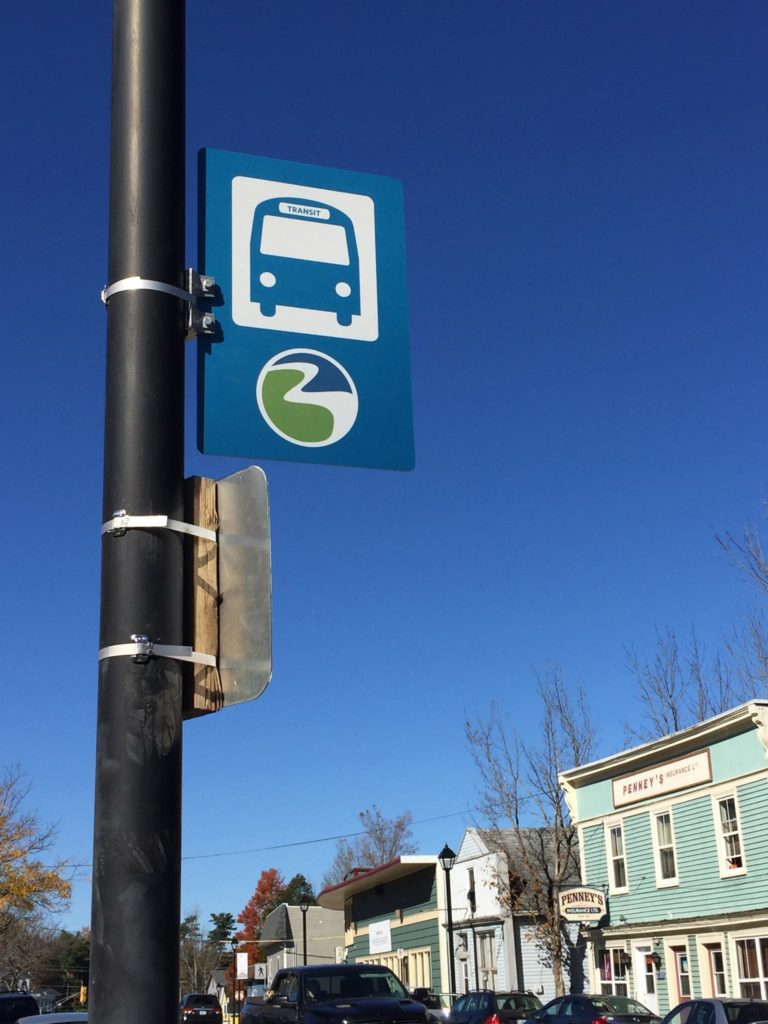
On October 21st, Transport Action Atlantic hosted its second Nova Scotia Members Event. A group of 10 TAA members made their way to Bridgewater NS on what turned out to be a gorgeous fall day, to explore the newest addition to the public transit world in the Maritimes. The Town of Bridgewater recently launched a transit system as a pilot project, with funding support from the Province and a pair of buses generously donated by the city of Halifax.
For most of the attendees, the day began at the VIA Rail station in Halifax – a convenient meeting location, though sadly the last train for Bridgewater departed many, many years ago. The trip to Bridgewater helped to highlight one of the major remaining gaps in the public transportation system in Nova Scotia, as the only option for getting there was by car. Most of the group met up here to carpool, while a few others from the area would arrive in Bridgewater on their own.
Arriving in town, the group made its way to Lanna Thai restaurant on King St., just a few blocks from the bus stop where the main highlight of the trip would begin. Lunch wrapped up with a little while to spare before the hourly bus would arrive, so the group explored the public parks along the waterfront.
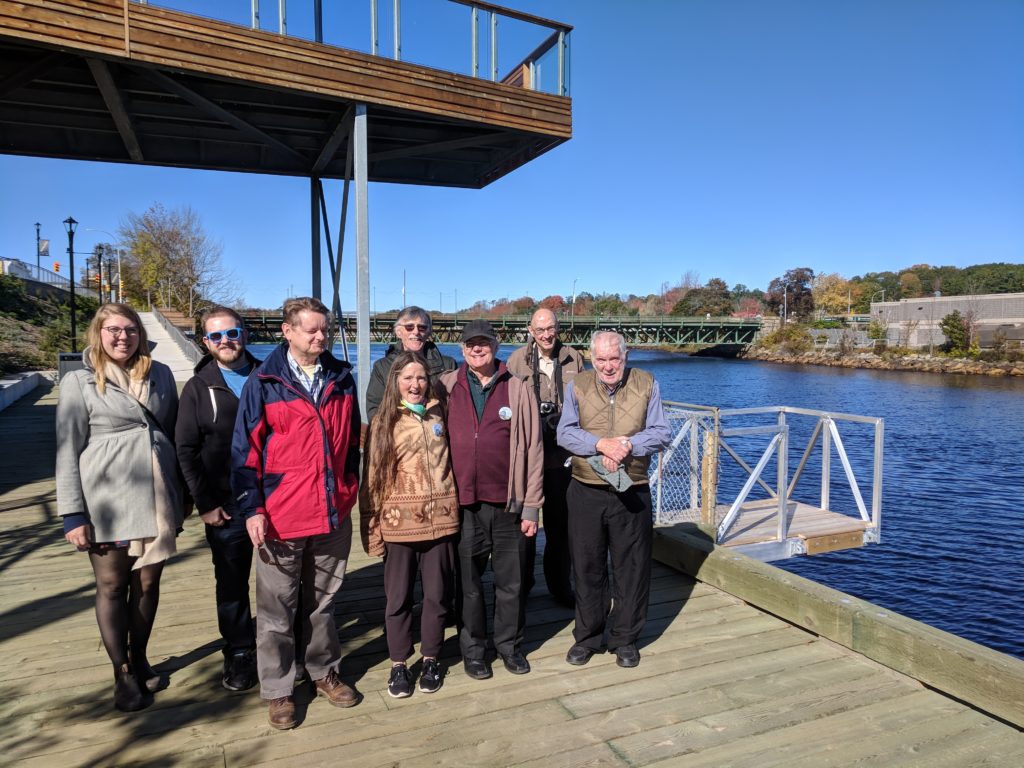
A short while later and right on schedule, the bus arrived! Bridgewater Transit is operating two GMC/Glaval Titan cutaway buses that were previously used on Halifax Transit’s rural-urban express routes. They were being retired from that service, and the city decided to donate them free of charge to Bridgewater, as the cost of running a process to sell them off would cost nearly as much (or more) as the price they might hope to fetch. The buses are well worn, but in low-intensity service like Bridgewater will be running, they will hopefully last a few more years. Only one bus is required to run the current service, and the other is kept on standby and swapped out regularly, to avoid ever having to cancel service due to equipment issues.
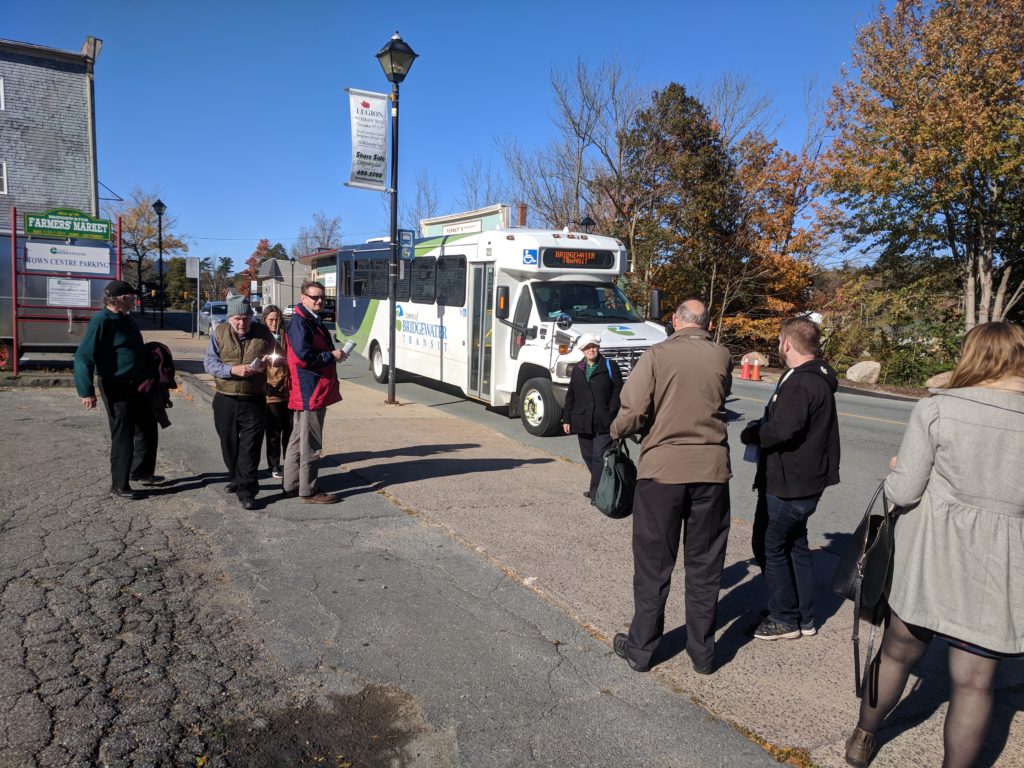
Bridgewater has set their initial system up as a figure-8 sort of loop. The run makes a loop on one side of the river, then crosses the bridge and loops on the other side, ultimately returning via the other bridge to the original side. The full trip takes a little under an hour, allowing them to operate an hourly schedule throughout the day. All members on our excursion were impressed by how well thought out the route was. It provides access to shopping areas, major employers, recreational centres, the NSCC campus, the hospital, and plenty of residential areas. For some parts of the route (like King St.) the stops are established, while along other parts the bus can be flagged down at any safe place along the route. The plan is to eventually establish permanent stops around the route, but during the pilot they’re aiming to get an idea of where people would most like to use the bus. A lot of thought has clearly gone into trying to make the route and schedule work as well as possible – there’s even an extra run on nights when there are hockey games at the arena, which will depart after the game ends to take people home!
The buses themselves are quite comfortable. They do rattle and shake a bit (clearly showing their age), but the seats are comfortable, and the capacity is clearly well suited to the sort of ridership one might expect for the town at this stage. Both buses have a wheelchair lift and tie-down area, and we were informed that several wheelchair users have already begun to use the bus on a regular basis. They also have bike racks on the front, which have been getting used by some riders.
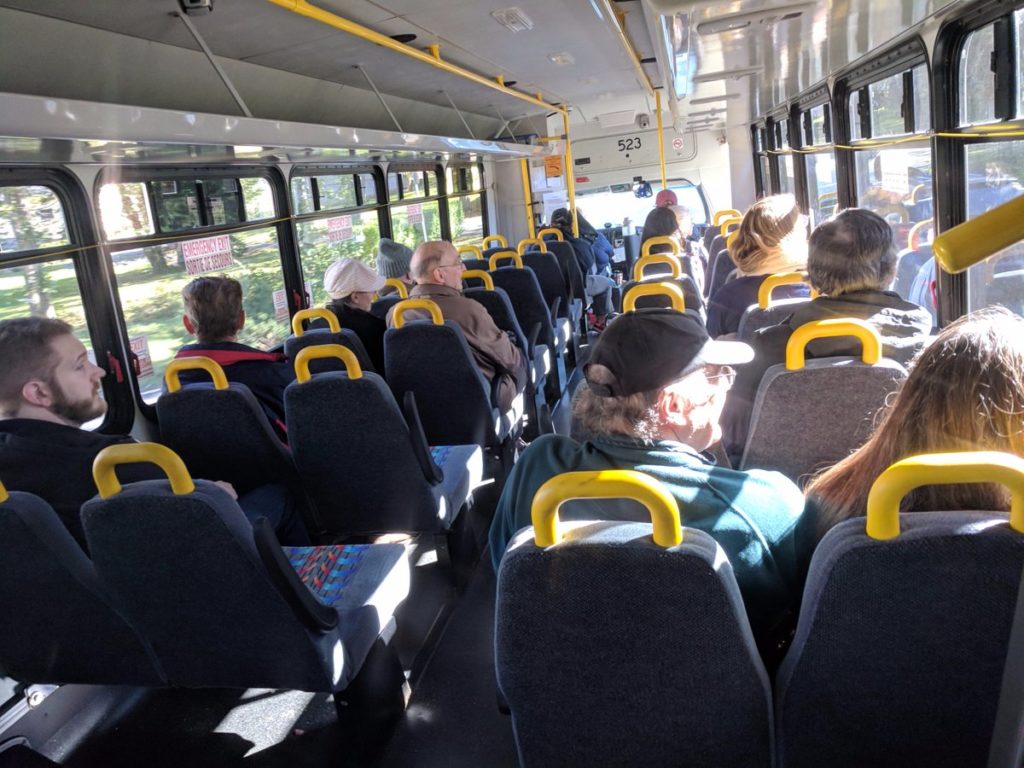
In addition to being practical and well designed, the route along the river is really quite scenic, particularly in the fall colours. The hour long trip flew by, and soon the group was back at the starting point and disembarking.
The next part of the day was no less exciting, as the group made its way into the town hall for a talk with Jr. Planner MacKenzie Childs, who was instrumental in the development of this pilot transit network. Much to our surprise, she was joined by Bridgewater’s Director of Planning, Jessica McDonald. The two of them were clearly pleased to see the enthusiastic support of TAA for their transit project, and were more than happy to explain the details of how the system came to be and answer the myriad of questions that the group had for them.
Once again, it became exceedingly clear that they had put a lot of thought into this project, and that they are very serious about making it a success and developing it into a permanent transit network for the town. The focus for now was to set up something that would work and get people used to the idea of using transit, and then hope that it can eventually continue to grow and expand to become an essential service for the community. One interesting point that was raised was the fact that for many people who grew up in town and had never lived farther away, using transit at all is a foreign concept. As such, the planners have had to try to find ways to teach people how the bus works, and to make it something they’ll feel comfortable using.
The pilot has already evolved in its short existence. Small changes like tweaking the schedule for reliable hourly departures are ongoing, in a constant effort to optimize the system. With the level of enthusiasm, commitment, and clever thinking displayed by the planners behind it, there’s good reason to be optimistic about the future of Bridgewater’s transit system.
Though many of us could likely have kept talking transit for hours, we had to wrap up our day to get on the road to return to Halifax and our other destinations.
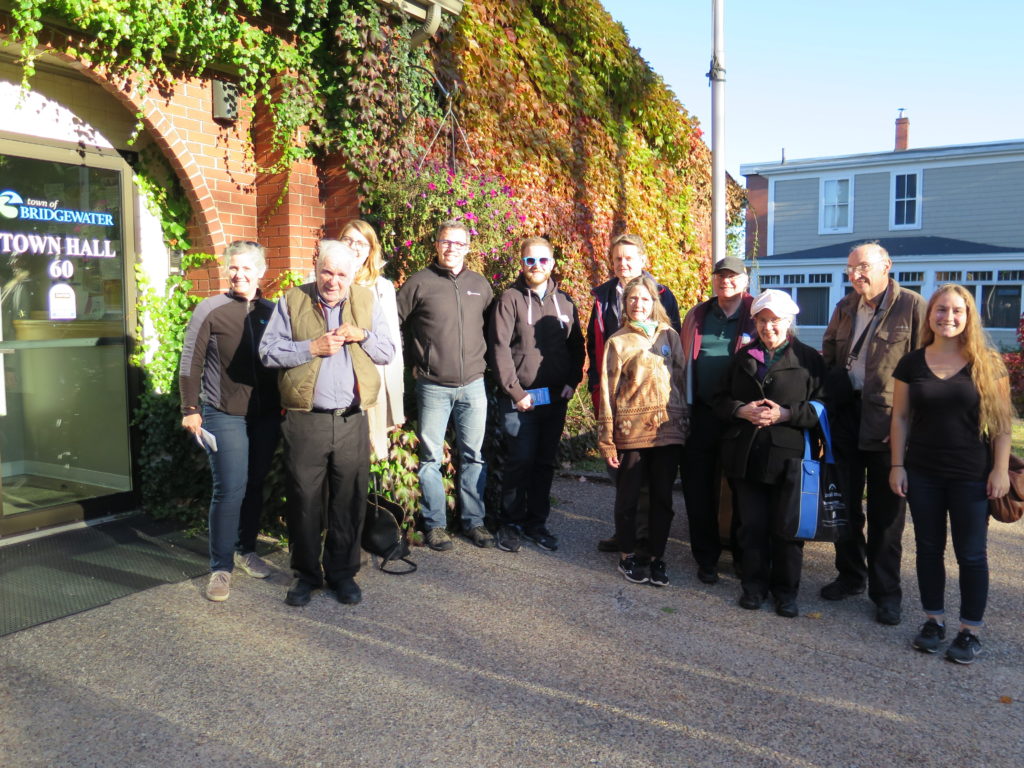
Overall, the day was thoroughly enjoyed by all, and marks a successful second installment in what we hope will be many TAA Members Events. We’re planning to hold another event and excursion in the spring of 2018. Do you have ideas for what that could be? Please let us know!
For our members elsewhere in the Maritimes, have no fear – we’re actively looking at excursion possibilities elsewhere, particularly in New Brunswick, so that more of our members will have the opportunity to participate.
More information on Bridgewater Transit, including schedules, maps, and fare information, is available HERE.





